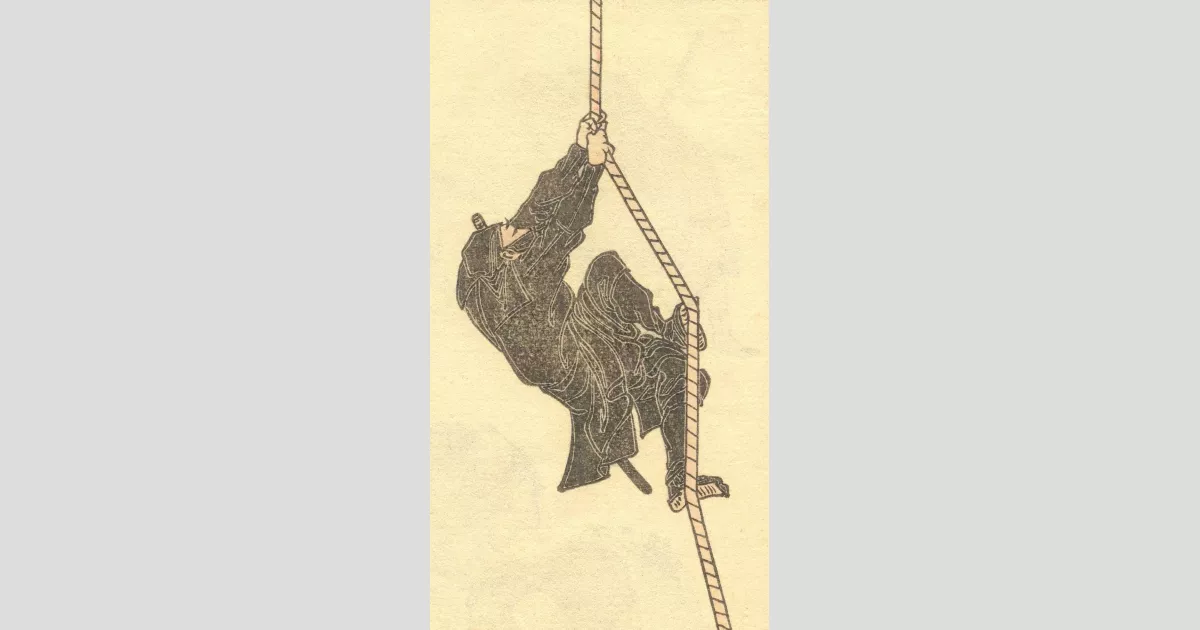Ninjas, or shinobi, were covert agents in pre-modern Japan. They functioned as spies and infiltrators, carrying out tasks like reconnaissance, espionage, ambush, and infiltration. While their origins might trace back to the 12th century, the historical record doesn't support the common perception of them being primarily assassins. Their roles primarily revolved around gathering information and disrupting enemy activities.
1956: First photograph of a ninjatō
In 1956, the first photograph of a ninjatō appeared in a booklet by Heishichirō Okuse.
1960: Discovery of artifacts dating to the Siege of Odawara
In 1960, artifacts dating back to the Siege of Odawara (1590), potentially ninja weapons like flat throwing stones and clay caltrops (predecessors to shuriken and makibishi), were uncovered, suggesting ninja involvement in the siege.
2010: Discovery of artifacts dating to the Siege of Odawara
In 2010, artifacts dating back to the Siege of Odawara (1590), potentially ninja weapons like flat throwing stones and clay caltrops (predecessors to shuriken and makibishi), were uncovered, suggesting ninja involvement in the siege.
2012: Last heir of ninjutsu decides not to pass on teachings
In 2012, Jinichi Kawakami, considered the last authentic heir of ninjutsu, chose not to pass on his teachings, believing ninjutsu has no relevance in modern times. Instead, he became the honorary director of the Iga-ryu Ninja Museum and researches ninjutsu at Mie University.
2017: Mie University founded the world's first ninja research center
In 2017, Mie University established the world's first research center dedicated to the study of ninja.
February 25, 2018: Identification of Benkei Musō as Denrinbō Raikei
On February 25, 2018, Yamada Yūji and Nakanishi Gō announced the identification of Benkei Musō as Denrinbō Raikei, a foreign samurai.
2018: Graduate master course about Ninja opens at Mie University
In 2018, Mie University opened a graduate master course dedicated to the study of ninja.
2020: First student graduates from the master course of ninja studies at Mie University
In 2020, Genichi Mitsuhashi, 45, became the first graduate of the ninja studies master's program at Mie University, after two years of studying historical records and martial arts, while also working as a farmer.
June 19, 2022: Discovery of written copy of "Kanrinseiyo"
On June 19, 2022, Kōka city announced the discovery of a 1748 written copy of "Kanrinseiyo", the original source of the famous ninja book "Bansenshukai", detailing 48 types of ninjutsu and methods.
Mentioned in this timeline

Books are a means of storing information as text or...
Trending

Simon Cowell is a prominent English television personality and businessman recognized for his role as a judge on various talent...

7 months ago Gary Payton Reflects on Jordan Matchup and Hypothetical Stats in Today's NBA

11 days ago Spurs Defeat Nuggets in Thrilling Game, Mavericks Face Nuggets

22 days ago Michael Douglas and Catherine Zeta-Jones Celebrate 25 Years of Marriage with Throwbacks
Luke Kornet is an American professional basketball player currently playing for the San Antonio Spurs in the NBA He's a...

6 months ago Jack Black's Minecraft Movie Sets Premiere on HBO Max, June 20, 2025
Popular

Candace Owens is an American conservative political commentator and author...

Ilhan Omar is an American politician currently serving as the...

XXXTentacion born Jahseh Dwayne Ricardo Onfroy was a controversial yet...

Tom Cotton is an American politician and Army veteran currently...
The Kennedy Center Honors are annual awards recognizing individuals and...

Kelsey Grammer is an accomplished American actor producer and singer...
